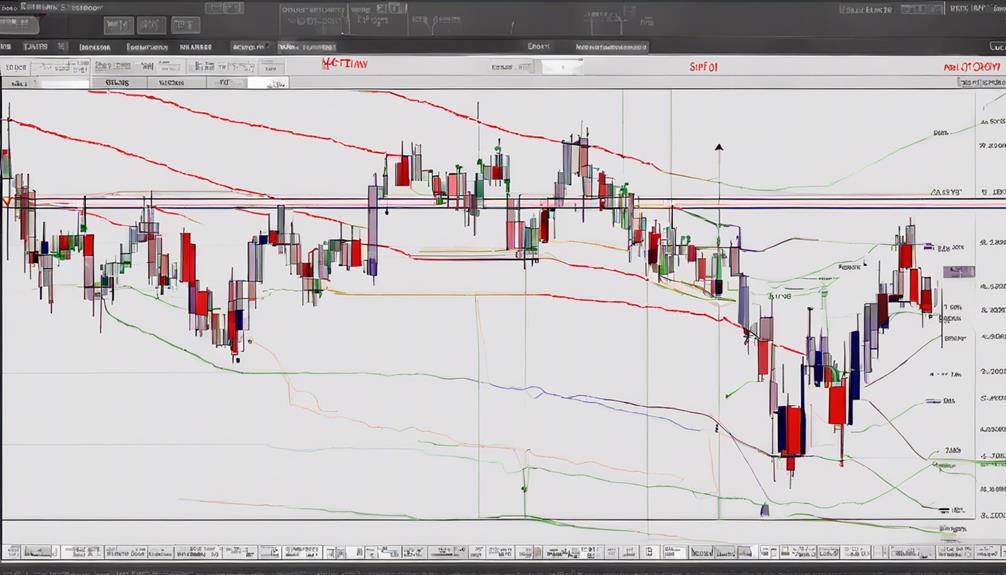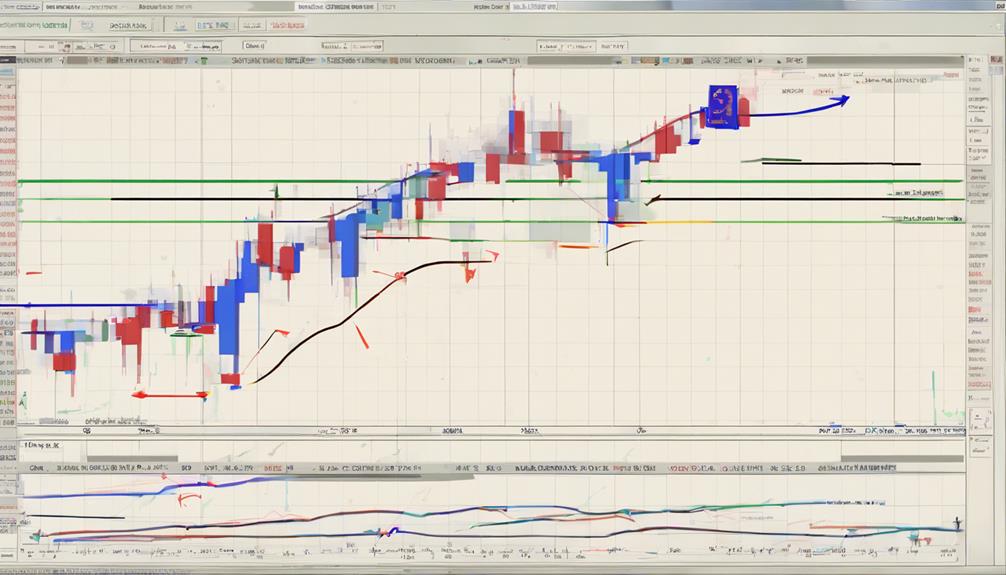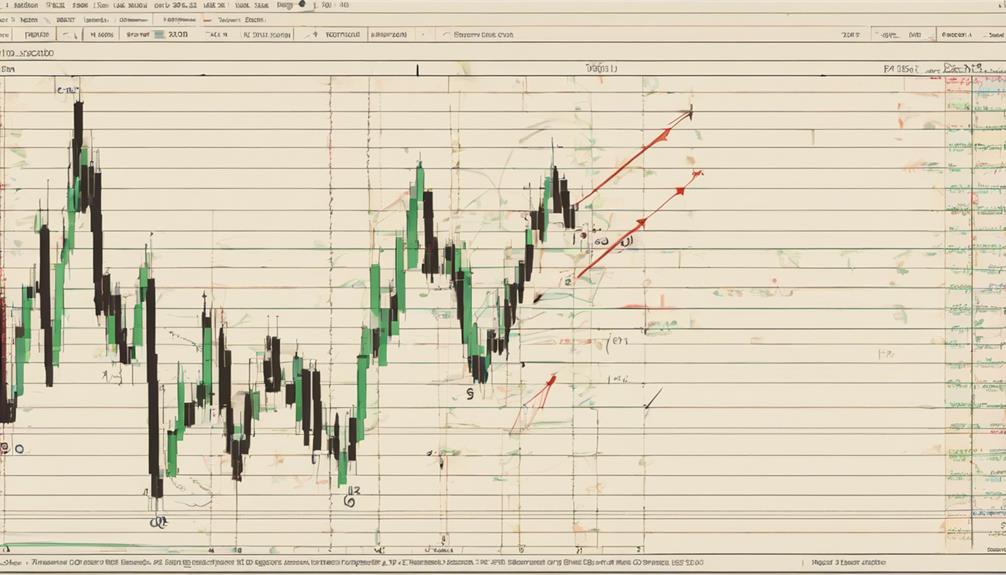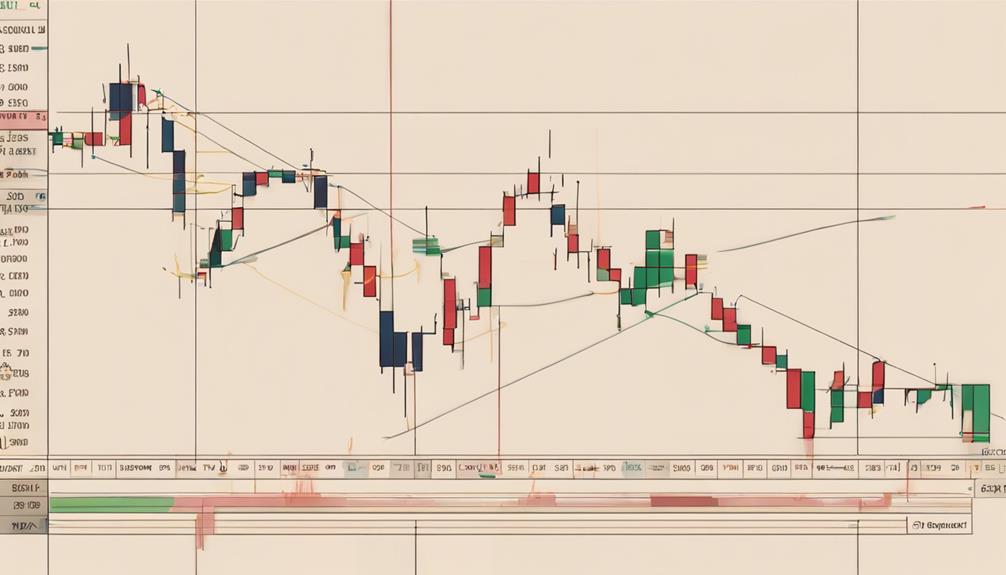When diving into the world of day trading, mastering the art of Fibonacci retracement can be a game-changer. Understanding the Fibonacci sequence and the golden ratio is just the tip of the iceberg. With tools like Fibonacci retracement grids and strategic use of Fibonacci levels, you can unlock potential price reversal points and fine-tune your trading strategies.
But that's only the beginning. To truly enhance your trading decisions, combining Fibonacci retracements with other technical indicators is key. Stay tuned to uncover how these top 5 tips can elevate your day trading game.
Fibonacci Retracement Basics
In day trading, understanding the basics of Fibonacci retracement is essential for identifying potential pullback and reversal points in the market. Fibonacci retracement involves using specific static price levels derived from the Fibonacci series, such as 23.6%, 38.2%, 50%, 61.8%, and 78.6%, to predict support and resistance lines.
These levels act as key areas where a potential reversal in price action may occur, offering day traders valuable insights into possible retracement ratios. By recognizing these static price levels, traders can anticipate price inflection points and make well-informed decisions when entering or exiting trades.
This method proves crucial in day trading scenarios, providing a structured approach to assessing market movements and identifying potential trade opportunities efficiently.
Setting Up Fibonacci Levels

To set up Fibonacci levels effectively for day trading, select significant swing highs and lows as reference points to accurately plot key retracement levels. Utilize the Fibonacci retracement tool to automatically calculate levels such as 23.6%, 38.2%, 50%, 61.8%, and 78.6%.
Consistency in choosing these reference points is crucial to avoid errors in placing Fibonacci levels. Adjust the Fibonacci grid according to the timeframe being traded to align with the price action. These Fibonacci levels serve as guides for identifying potential support and resistance areas in day trading scenarios.
Identifying Entry and Exit Points

Identify potential entry and exit points in day trading by leveraging Fibonacci retracement levels, especially those like 38.2% and 61.8%, and seeking confluence with other technical indicators for robust signals. When pinpointing these crucial points, consider the overall market trend and combine Fibonacci retracement with stop-loss orders for effective risk management.
Here are some tips for identifying entry and exit points using Fibonacci retracement:
- Utilize Fibonacci levels (38.2% and 61.8%) in conjunction with other technical indicators.
- Determine profit targets using Fibonacci extensions.
- Factor in the market trend to validate entry and exit points.
- Implement stop-loss orders to safeguard against adverse market movements.
Using Fibonacci Extensions

Consider incorporating Fibonacci extensions into your day trading strategy to project potential price targets beyond standard retracement levels and enhance your ability to anticipate market movements. Fibonacci extensions, such as 1.272, 1.414, and 1.618, offer insight into where price may move after a retracement, aiding in setting profit targets.
These levels can help traders identify areas for potential trend continuation or reversal, going beyond initial support and resistance points. By utilizing Fibonacci extensions, you can enhance your trading strategies and gain a deeper understanding of price movements.
Incorporating these extensions into your analysis provides valuable information that can assist in making more informed trading decisions based on projected price targets.
Managing Risk With Fibonacci Retracement

Manage risk effectively in day trading by setting stop-loss orders based on Fibonacci retracement levels. When incorporating Fibonacci retracement into your risk management strategy, consider the following:
- Identify Price Reversal Points: Use Fibonacci levels to determine potential areas where price may reverse, helping you adjust risk accordingly.
- Analyze Entry and Stop-loss Levels: Evaluate the distance between your entry and stop-loss levels concerning Fibonacci retracement areas for precise risk management.
- Determine Position Sizing: Implement proper position sizing based on Fibonacci retracement levels to control your risk exposure effectively.
- Place Protective Stops: Utilize Fibonacci retracement levels as a guide to placing protective stops, ensuring capital protection in your day trading strategies.
How Can Fibonacci Extensions Complement Fibonacci Retracement in Day Trading?
When it comes to forex trading, Fibonacci extensions can complement Fibonacci retracement in day trading. Traders use Fibonacci extensions to identify potential profit targets beyond the regular price movement, while Fibonacci retracement helps identify potential support and resistance levels. Combining these tools can help traders make more informed decisions.
Frequently Asked Questions
What Are the Best Fibonacci Levels for Day Trading?
For day trading, the best Fibonacci levels to watch are typically 23.6%, 38.2%, and 50%. These levels help identify short-term support/resistance areas. Focus on 23.6% and 38.2% for quick reversals and entry/exit points.
What Is the Best Time Frame to Use Fibonacci Retracement for Day Trading?
When day trading, stick to the 5-minute or 15-minute chart for Fibonacci retracement. These time frames let you catch swift price moves and pinpoint intraday support and resistance levels, aiding quick decision-making.
What Is the Best Way to Use Fibonacci Retracement?
To use Fibonacci retracement effectively, identify swing highs and lows. Anticipate reversals by applying key levels like 23.6%, 38.2%, and 61.8%. Combine with other indicators for reliable signals. Adjust levels for different time frames and market conditions.
Does Fibonacci Work in Day Trading?
Yes, Fibonacci retracement works in day trading by identifying potential support and resistance zones. Traders often use Fibonacci levels like 23.6%, 38.2%, 50%, 61.8%, and 78.6% to anticipate price reversals and set entry/exit points effectively.
Conclusion
Now that you understand the basics of Fibonacci retracement and how to set up levels, identify entry and exit points, use extensions, and manage risk effectively, you're well-equipped to enhance your day trading strategies.
By combining these techniques with other technical indicators, you can make more accurate predictions and improve your trading outcomes.
Stay disciplined, set your stop-loss orders and profit targets based on Fibonacci levels, and watch your trading success soar.
